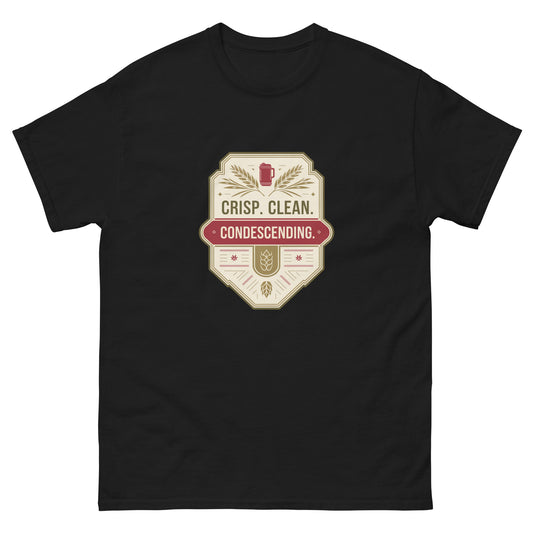Coopers kits nailed flavour—why do pros ditch extract once they taste control brewing?
Share
Which Brewing Method Matches Your Style? It’s Not a One-Size-Pours-All.
The classic debate: All-Grain vs Extract. Here’s what no one tells you.
You’ve got your fermenter scrubbed clean, your bench cleared, and that itch to brew something your mates won’t shut up about. But then comes the big one—All-Grain or Extract? One’s got you riding flavour like a pro biker on a winding road. The other lets you jump the learning curve, straight into bottling days.
I’ve brewed both in the middle of a South Aussie summer with out-of-date labels and missing instructions. I’ve also helped a good hundred brewers pick their path—some still rock extract after five years, others now mill their own grain, wear Trub-splattered shirts with pride, and swear they’ll never go back.
This isn’t about ‘right or wrong.’ It’s about what fits you and your shed. Let’s break it down.
What's All-Grain Brewing?
Think full control. You start with whole malted grains (fresh-cracked barley, often), mash it yourself at set temps, then sparge, boil, hop, ferment, bottle. Every step is yours to tweak.
“All-grain brewing is kind of like building a pizza from dough to oven. Everything is yours to shape—flavour, mouthfeel, strength.” — Candeece
What’s Extract Brewing?
The shortcut. You buy malt extract (liquid or dry), already mashed and concentrated. You add water, boil it up with hops, cool, ferment, and bottle. It’s quick, consistent, and kind to both nerves and time.
“With extract, the heavy lifting is already done. It’s great when you want results without a science degree.” — Candeece
Core Differences (and What They Mean for You)
- Time: All-grain brews can take 4–6 hours. Extract? Around 2–3.
- Control: Want to fine-tune bitterness, mouthfeel, or create a clone of that hazy IPA you loved in Adelaide last month? Go all-grain.
- Gear: All-grain needs extra kit—mash tun, kettle, maybe a chiller. Extract can be done in a single big pot.
- Taste: All-grain gives more depth and control, but a well-done extract with fresh hops? Still a ripper beer.
- Cost: Grain’s cheaper batch-for-batch. Extract saves time, and smaller gear setups cost less up front.
Real Shed Talk: Why One Bloke Switched
One local brewer—let’s call him Mark—started with extract kits after grabbing one of our beginner beer packs. Five months in, he’d made stout, blonde lager, and even a cheeky ginger beer. He loved the simplicity, but said he felt like he was ‘just tipping stuff in.’
After a few chats, he tried a basic BIAB (Brew in a Bag) all-grain setup. Fumbled the first mash temp. Burnt his knuckles cooling the kettle. But the result? A crisp pale ale with citrusy hops that vanished in one Saturday footy night.
Now he’s running a temp-controlled fridge setup, drinks proudly from his custom-labelled bottles, and says, "I didn’t just brew that—I built it."
So Which One’s Right for You?
Here’s the punchline:
If you’re chasing variety, creative control, or homebrewing as an art form—you’ll love the challenge and satisfaction of all-grain. But if what you want is a smooth, dead-easy way to get tasty beer into bottles without overthinking things, extract keeps it fun and foolproof.
And there’s zero shame in doing both. Swapping between them based on season, style, or time is what many brewers settle into. It’s not one path—it’s a journey around the block (or around the brew fridge).
Tips for Choosing (No BS Edition)
- Start with extract if you’re new and don’t want to splurge on gear yet. Focus on learning fermentation basics.
- Try all-grain when you’re curious to tweak recipes, or you want better control over sugar, colour, or head retention.
- Brew ‘em both if you’ve got the gear and the inclination. A rainy weekend and free arvo is all you need.
Seen it all? Not quite.
There’s something magic about watching your grains swirl in steaming water, knowing the flavour starts—right—now. But there’s also joy in cracking open a spectacular brew you knocked out one Wednesday arvo while the kids did homework.
The twist? You’re not picking one forever. You’re forging your own brewing rhythm. And that’s where the fun really begins—even if you scorch a finger, forget a yeast packet, or name every beer "Test Batch #5".
Happy brewing,
Candeece

Stay Connected
Join our homebrewing community: Beer and Barrel Society on Facebook
Follow our Facebook Page: Strathalbyn H Hardware on Facebook








